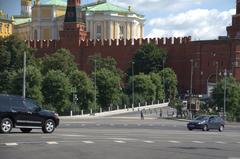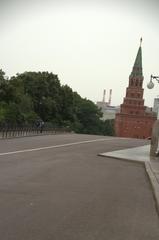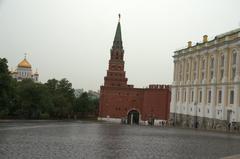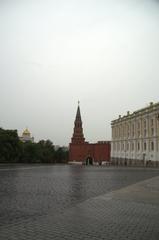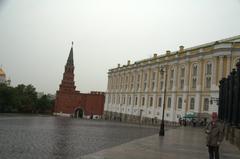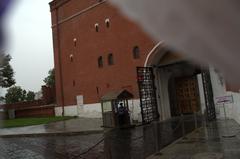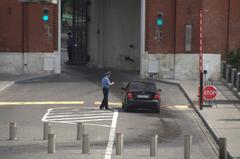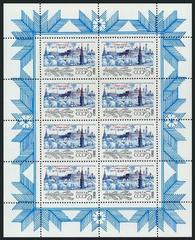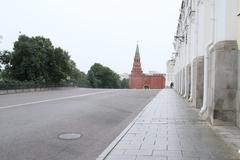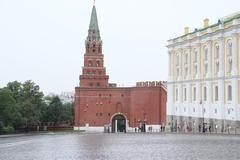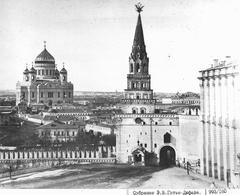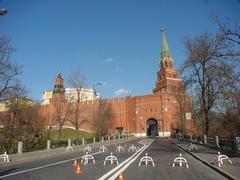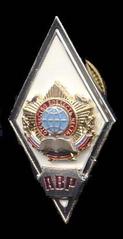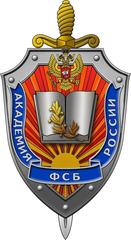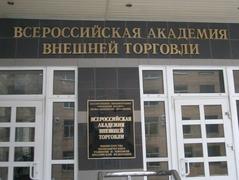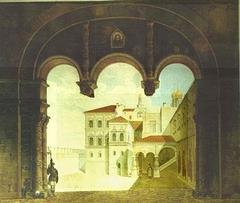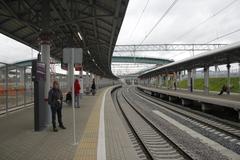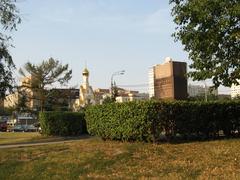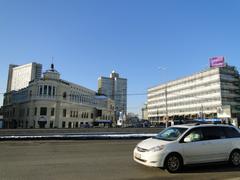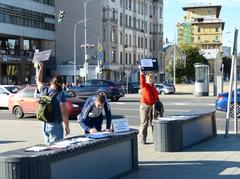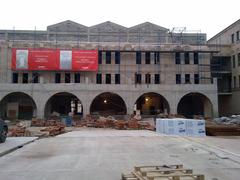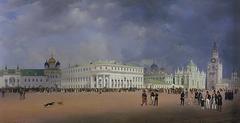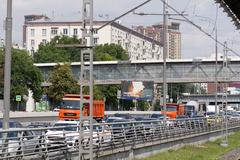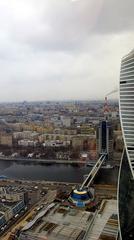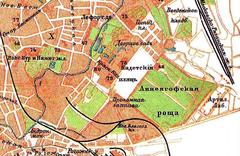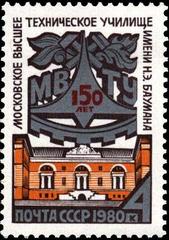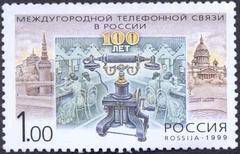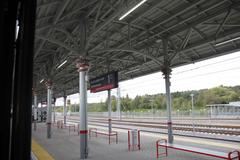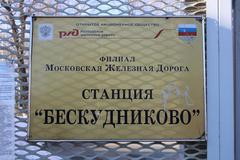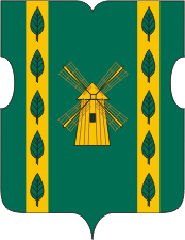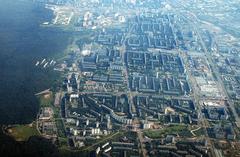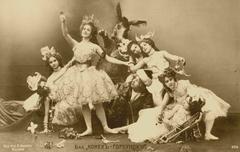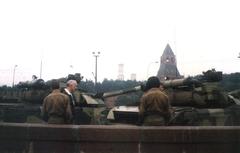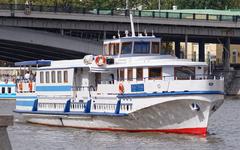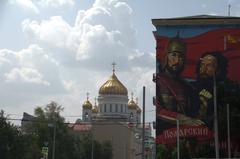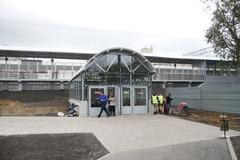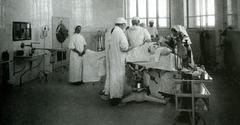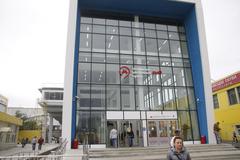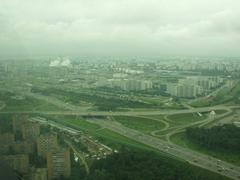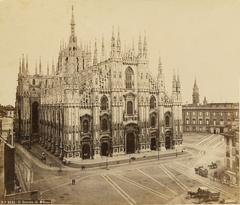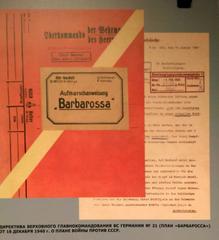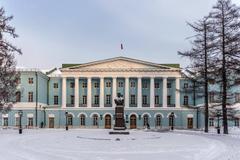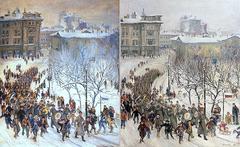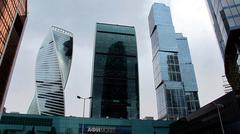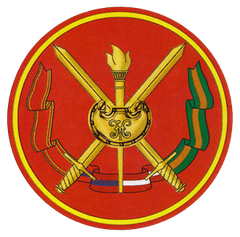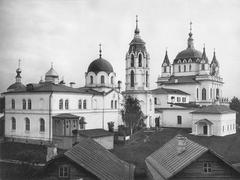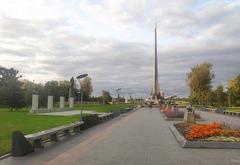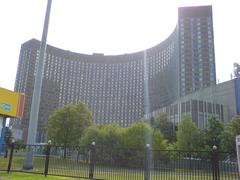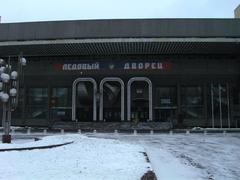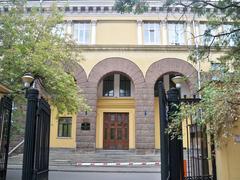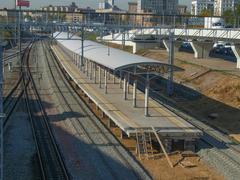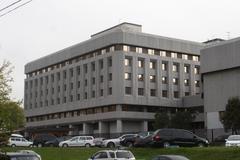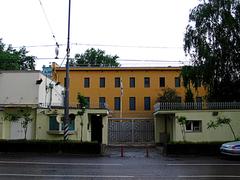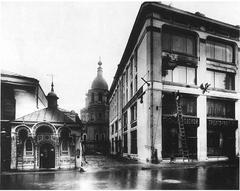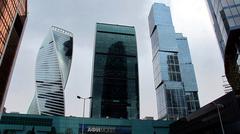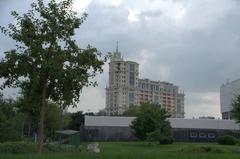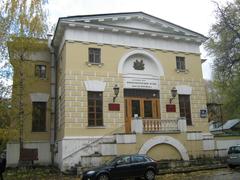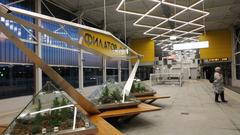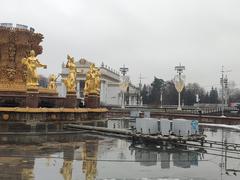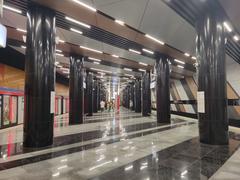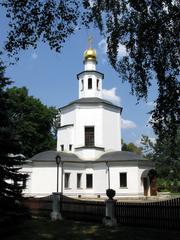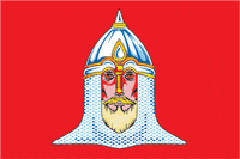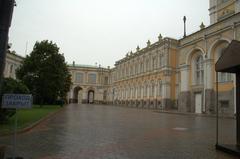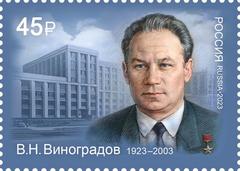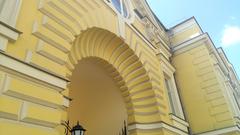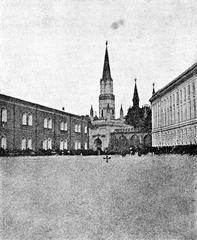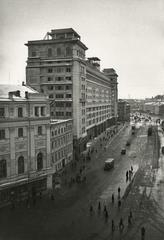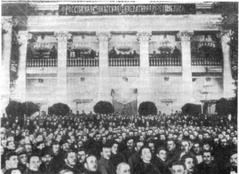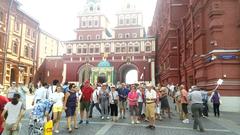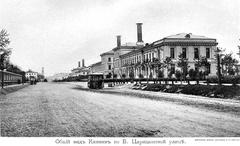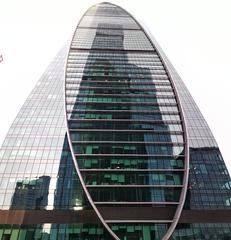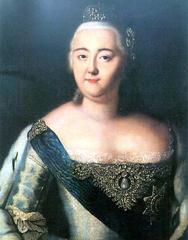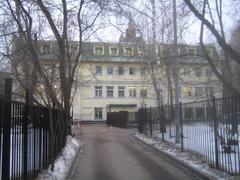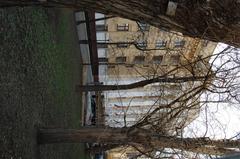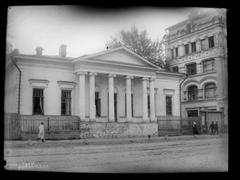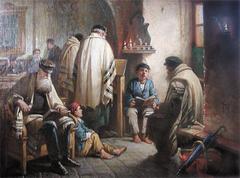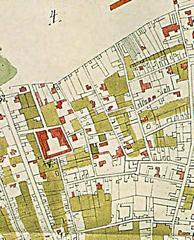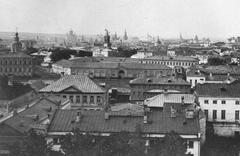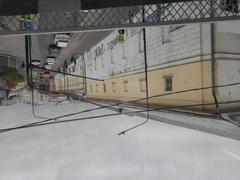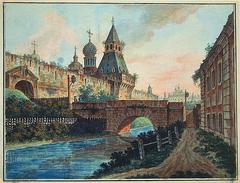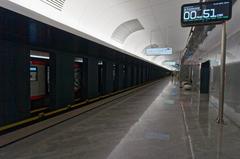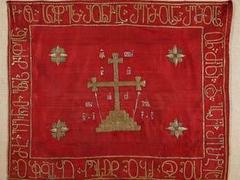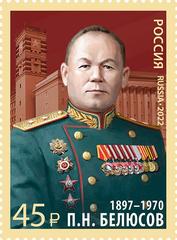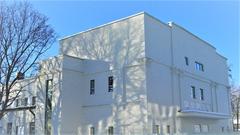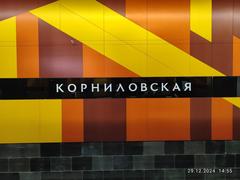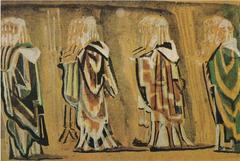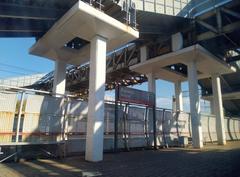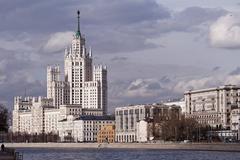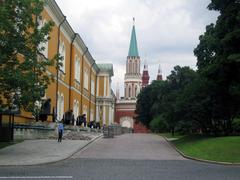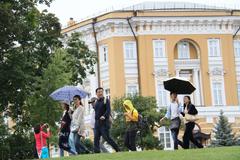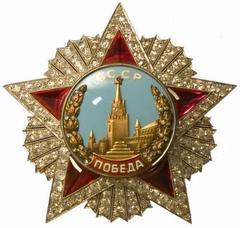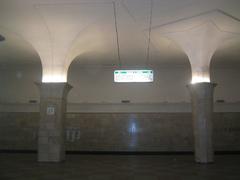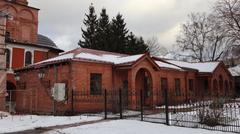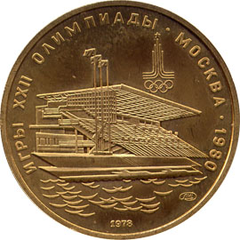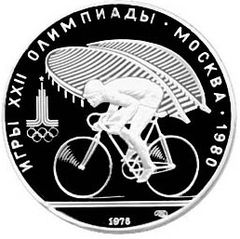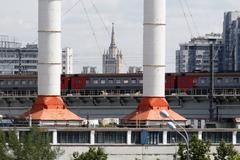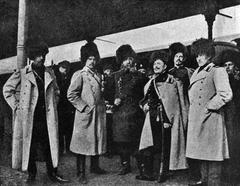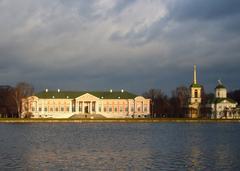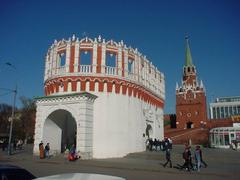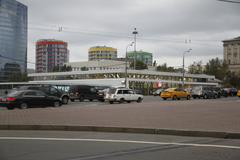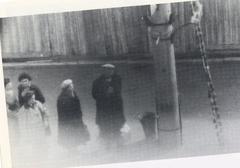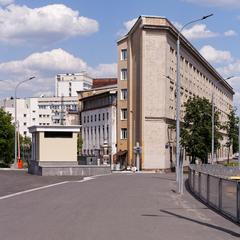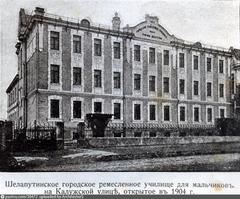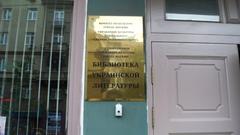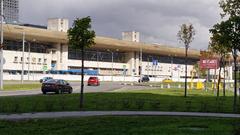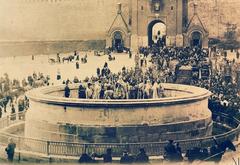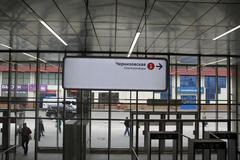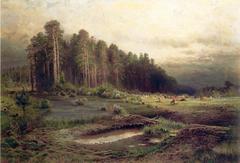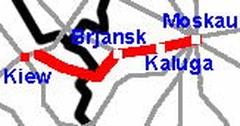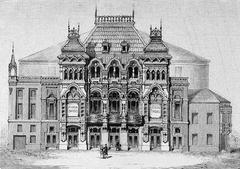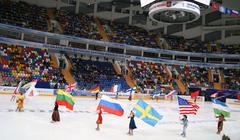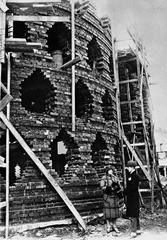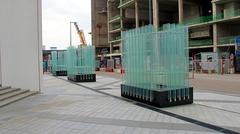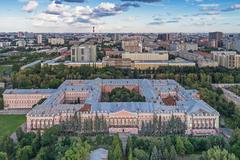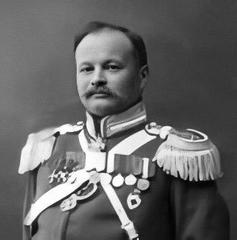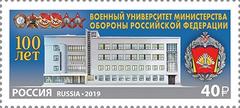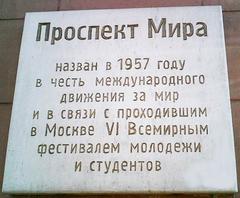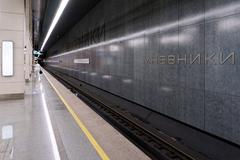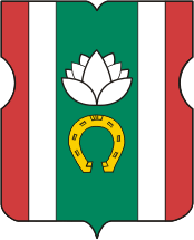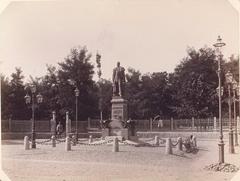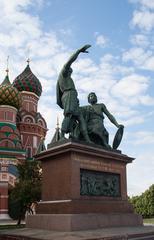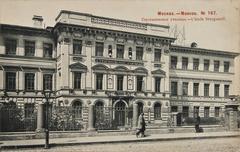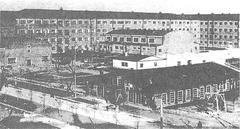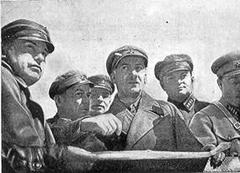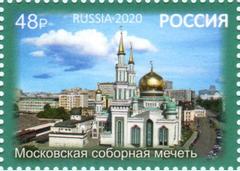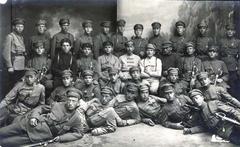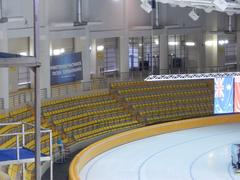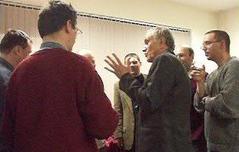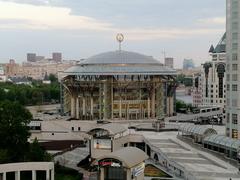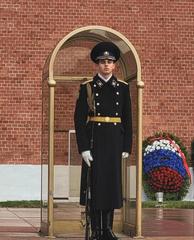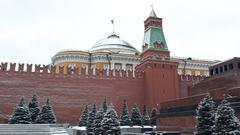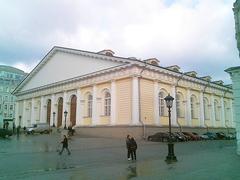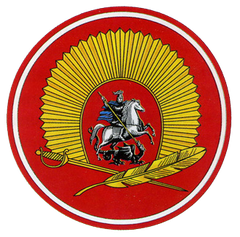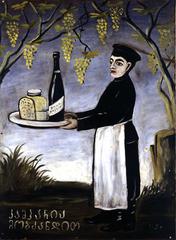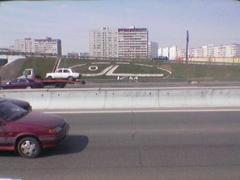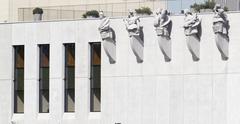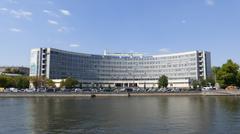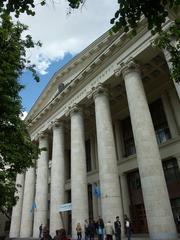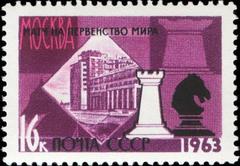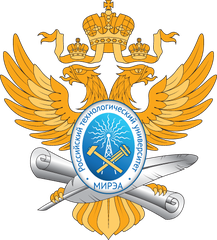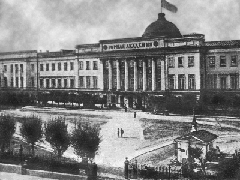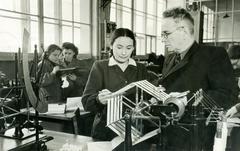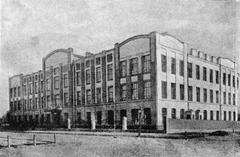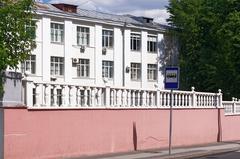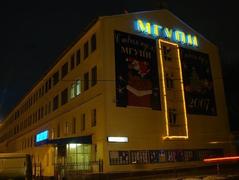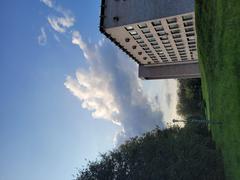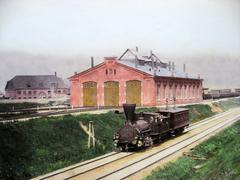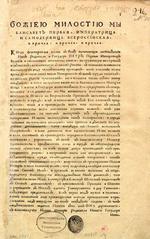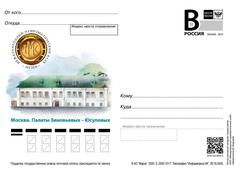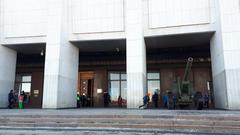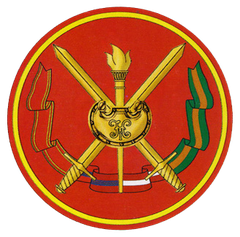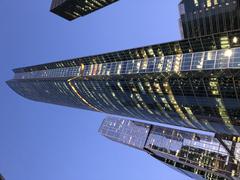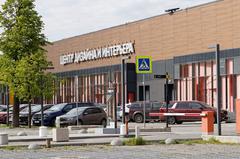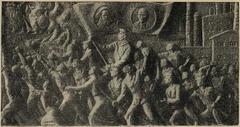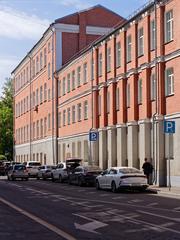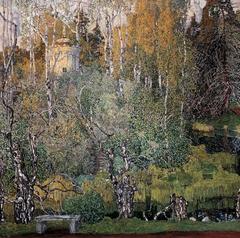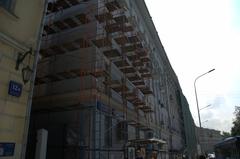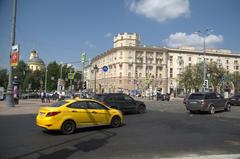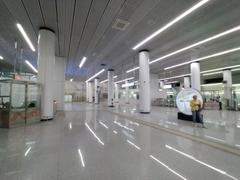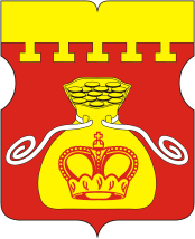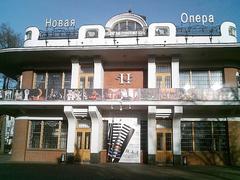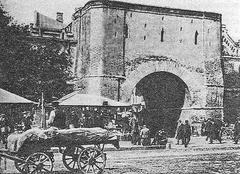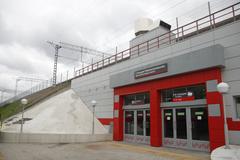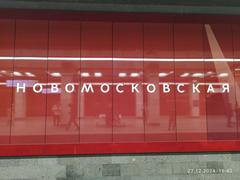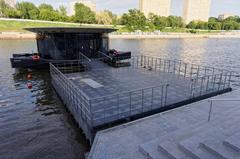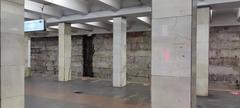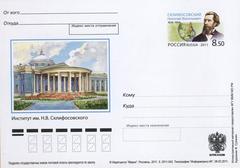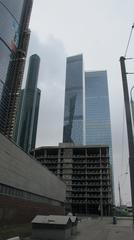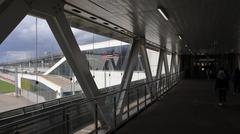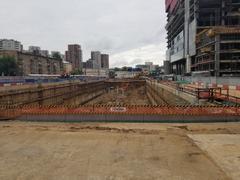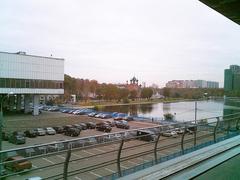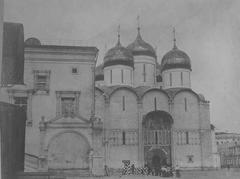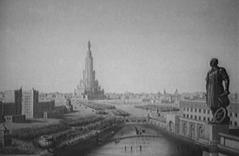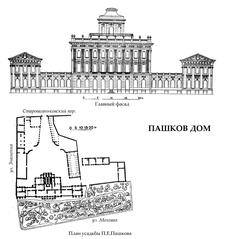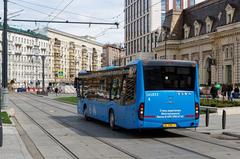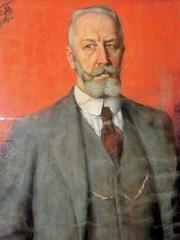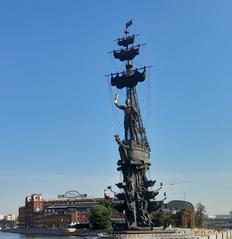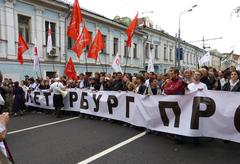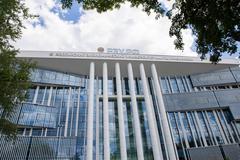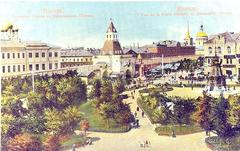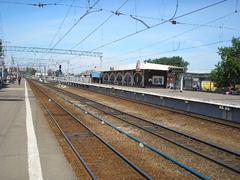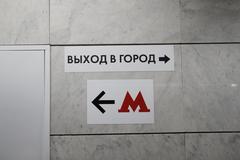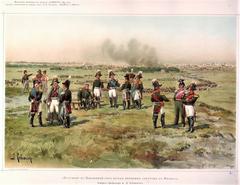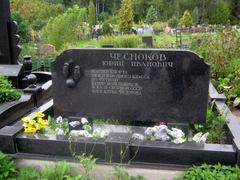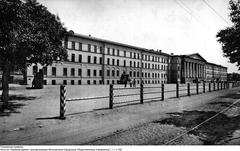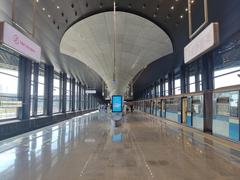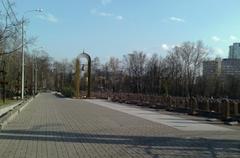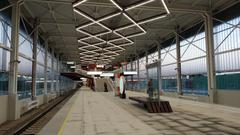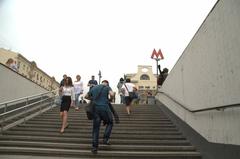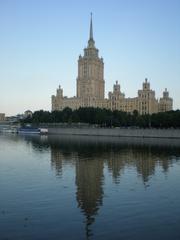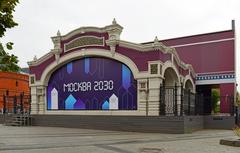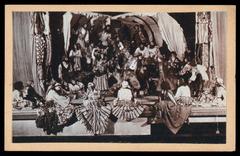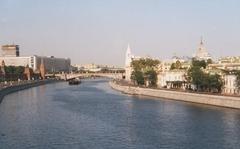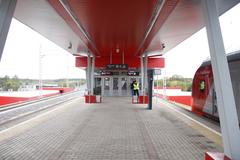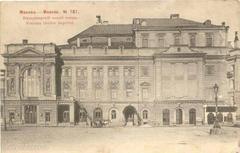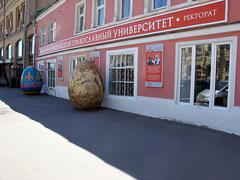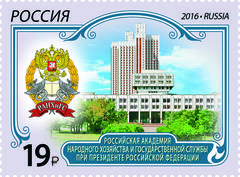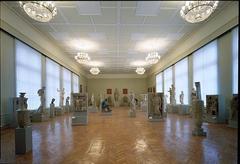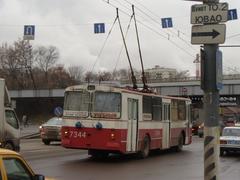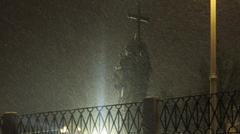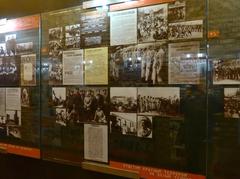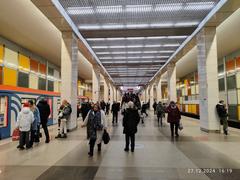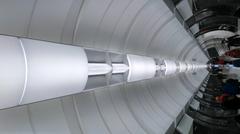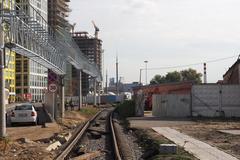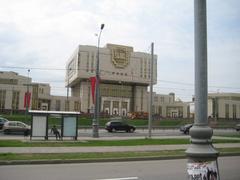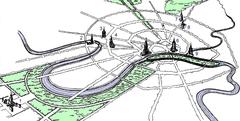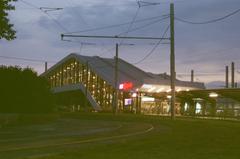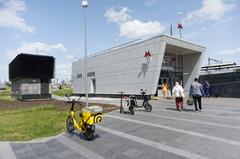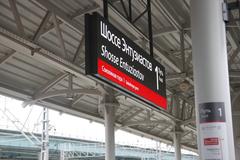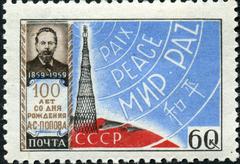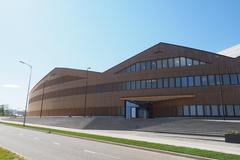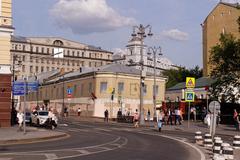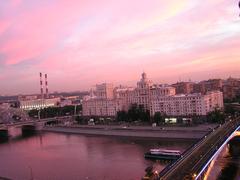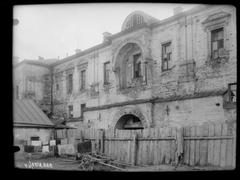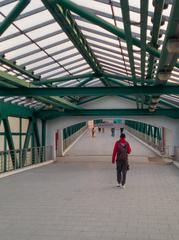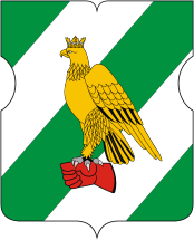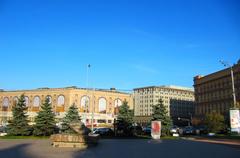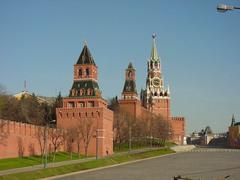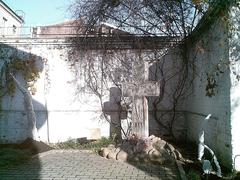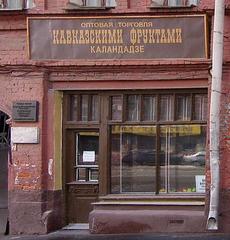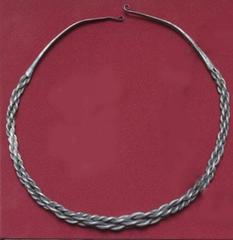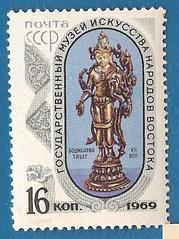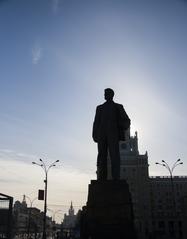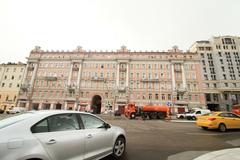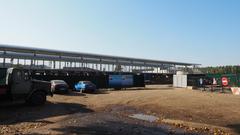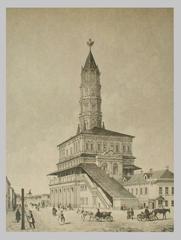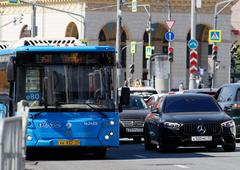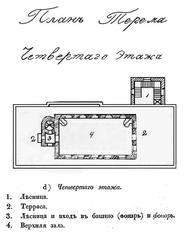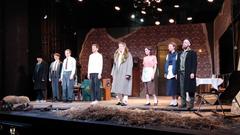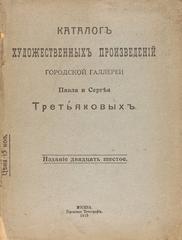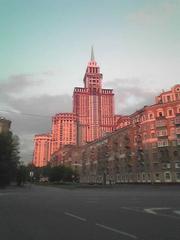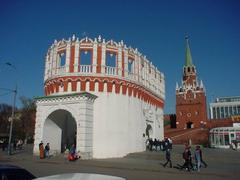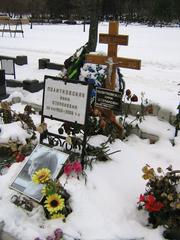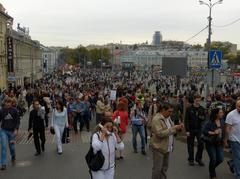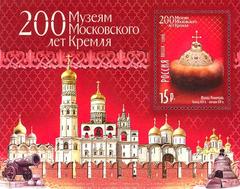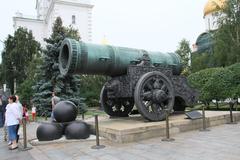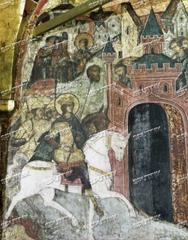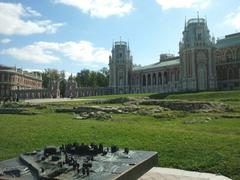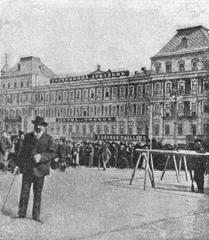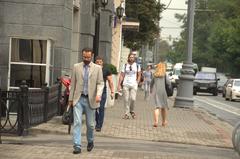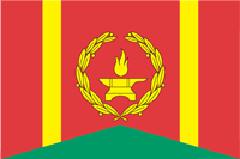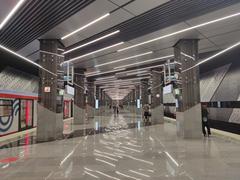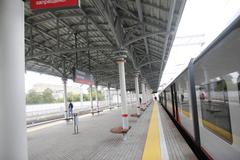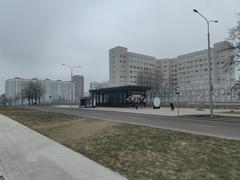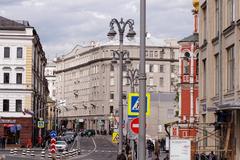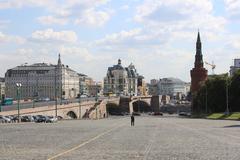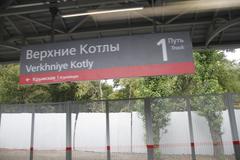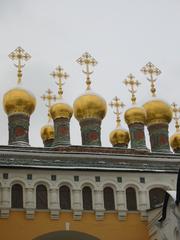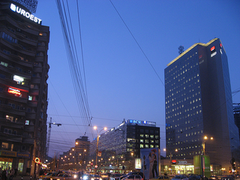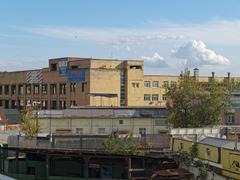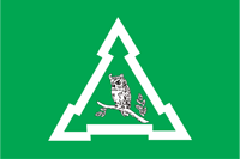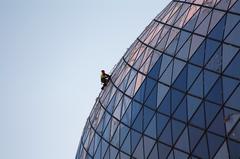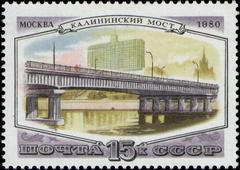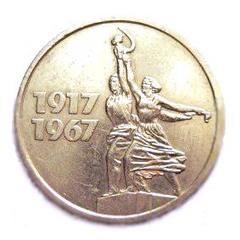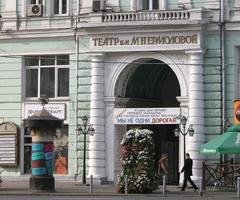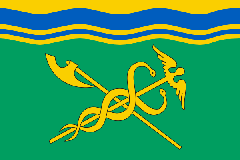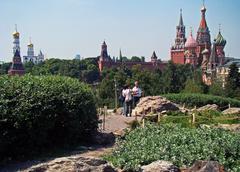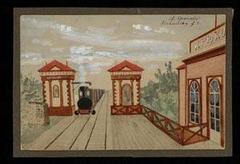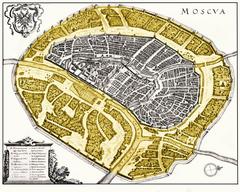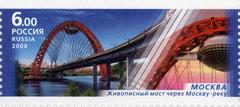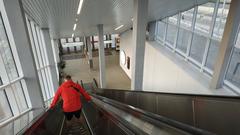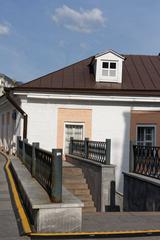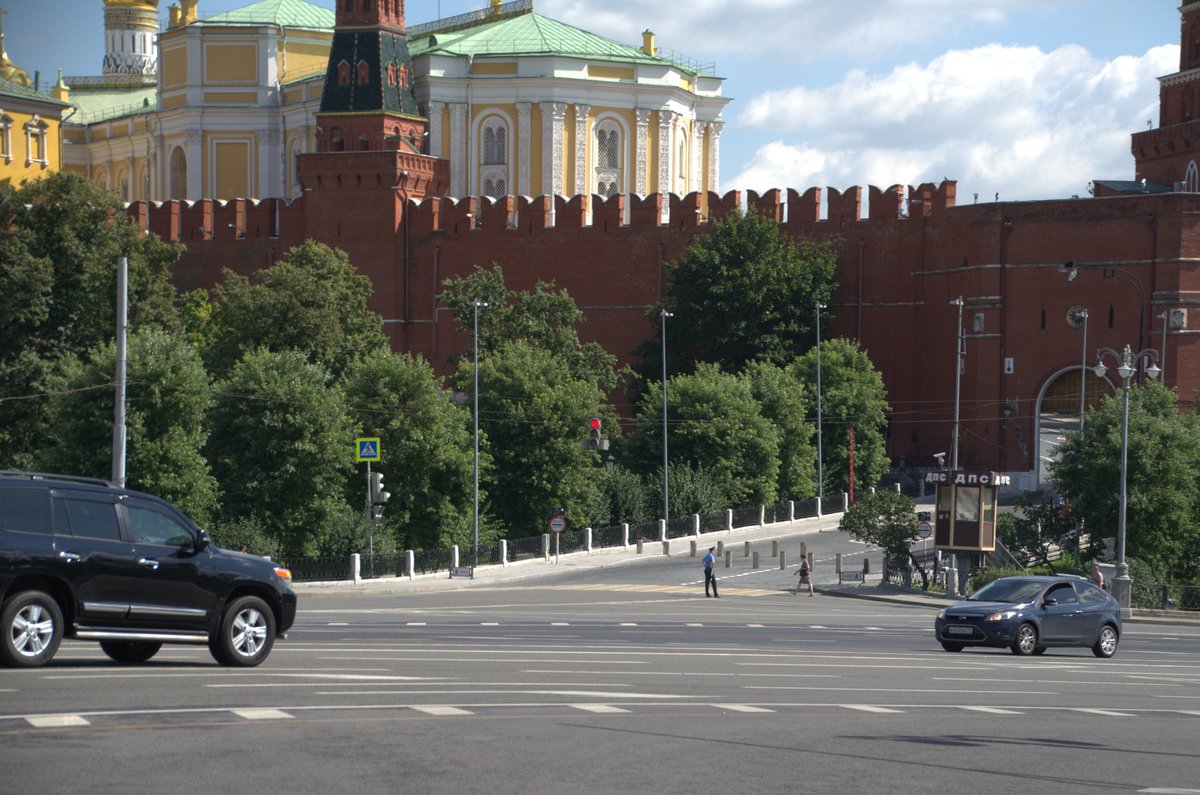
Visiting Боровицкая башня in Moscow: History, Significance, Tips, and Visitor Information
Date: 01/08/2024
Introduction
Borovitskaya Tower, known in Russian as Боровицкая башня, stands as a prominent historical and architectural landmark within the Moscow Kremlin. Nestled in the southwestern part of the Kremlin, this tower offers a captivating glimpse into Russia’s rich and multifaceted history, making it an essential stop for any visitor to Moscow (Wikipedia). The name ‘Borovitskaya’ is derived from the ancient coniferous forest that once covered Borovitsky Hill, one of Moscow’s seven hills, adding a layer of natural history to its cultural significance (Advantour).
Constructed in 1490 by the Italian architect Pietro Antonio Solari, the Borovitskaya Tower has undergone numerous architectural transformations and restorations, reflecting the dynamic history of Moscow itself (Wikipedia). Initially part of the wooden fortress of Dmitry Donskoy, it evolved into a brick structure, symbolizing the transition from medieval to modern Russian architecture (Ermakvagus). The tower’s unique pyramid-like shape and prismatic branch arch set it apart from other Kremlin towers, making it a focal point for architectural historians and enthusiasts alike (Ermakvagus).
The Borovitskaya Tower has not only served as a defensive stronghold during various sieges but also as a ceremonial gateway during significant events such as the coronation of Catherine II (Kremlin Architectural Ensemble). Its resilience and continuous restoration efforts underscore its importance as a historical and cultural icon. Today, the tower remains a testament to Moscow’s architectural ingenuity and historical depth, drawing countless visitors who seek to explore its storied past and unique architectural features.
Table of Contents
- [Historical Background](#historical-backgroundhistorical-background)
- [Early History and Construction](#early-history-and-constructionearly-history-and-construction)
- [Architectural Evolution](#architectural-evolutionarchitectural-evolution)
- [Renaming and Restoration](#renaming-and-restorationrenaming-and-restoration)
- [Modern Enhancements and Preservation](#modern-enhancements-and-preservationmodern-enhancements-and-preservation)
- [Unique Architectural Features](#unique-architectural-featuresunique-architectural-features)
- [Historical Significance](#historical-significancehistorical-significance)
- [Visitor Information](#visitor-informationvisitor-information)
- [Visiting Hours and Tickets](#visiting-hours-and-ticketsvisiting-hours-and-tickets)
- [Travel Tips](#travel-tipstravel-tips)
- [Nearby Attractions](#nearby-attractionsnearby-attractions)
- [Accessibility](#accessibilityaccessibility)
- [FAQ](#faqfaq)
- [Conclusion](#conclusionconclusion)
- [References](#referencesreferences)
Historical Background
Early History and Construction
The Borovitskaya Tower, also known as the Predtechenskaya or Chertolsky Gate, is a significant historical structure located in the southwestern part of the Moscow Kremlin. The name ‘Borovitskaya’ is derived from the ancient coniferous forest (bor) that once covered Borovitsky Hill, one of the seven hills on which Moscow stands (Advantour).
The Borovitskaya Gate is one of the earliest constructions in Moscow, dating back to the wooden fortress of Dmitry Donskoy. The current tower above the gate was built in 1490 during the reconstruction of the Kremlin from white stone to brick. This reconstruction was overseen by the Italian architect Pietro Antonio Solari, also known as Petr Fryazin (Wikipedia).
Architectural Evolution
The Borovitskaya Tower has undergone several architectural changes since its initial construction. In the 17th century, a hipped roof with a tiled covering was added. Until 1935, the tower was adorned with a gilded double-headed eagle, a symbol of the Russian Empire. In 1937, this was replaced by a ruby star, a symbol of Soviet power (Ermakvagus).
The tower’s powerful square base is topped with three tetrahedrons of various sizes, culminating in a tall stone dome. The height of the Borovitskaya Tower without the star is 50.7 meters, and with the star, it reaches 54.5 meters (Advantour).
Renaming and Restoration
In 1658, Tsar Alexey Mikhailovich ordered the tower to be renamed Predtechenskaya after the nearby Church of St. John the Forerunner. However, this new name never gained popularity, and the original name persisted (Kremlin Architectural Ensemble).
The tower has faced several instances of damage and subsequent restoration. In 1812, it was damaged by an explosion staged by the retreating French army. Between 1817 and 1819, the tower was restored by architect Osip Bove (Wikipedia). Further restoration efforts were made in 1935 when the Soviets installed the red star on top of the tower.
Modern Enhancements and Preservation
In the 20th century, the Borovitskaya Tower underwent significant enhancements and preservation efforts. On June 1, 1707, by order of Peter I, additional fortifications were added, including earthworks from the side of the Moskva River and a bastion facing the Borovitsky Gate (Ermakvagus).
During the preparations for the coronation of Catherine II in 1762, the tower was repaired and decorated with solemn illumination. Architect Ivan Michurin and carpenter Erich Gampus were responsible for these works, which included the use of 36 pounds of paint and 400 lanterns of different colors to decorate the facade (Ermakvagus).
Unique Architectural Features
The Borovitskaya Tower is unique among the Kremlin towers due to its pyramid-like shape and prismatic branch arch. Historian S. P. Bartenev noted that it is impossible to find a prototype for this tower among the many towers in Italy and other European countries. The only similar monument in Russia is the Sumbeki Tower in Kazan (Ermakvagus).
The tower is divided into eight floors, with internal stairs from the first to the fourth floor comprising 75 steps. The main body of the tower features three tetrahedrons of varying sizes, enhancing its distinctive architectural style (Ermakvagus).
Historical Significance
The Borovitskaya Tower has played a crucial role in the history of Moscow and the Kremlin. It served as a passage to the housekeeping part of the royal estate, separated from its formal part by a stone wall erected in 1499 (Kremlin Architectural Ensemble).
In the 19th century, the tower was part of the preparations for the coronation of Catherine II, highlighting its importance in Russian ceremonial traditions. The tower’s resilience and continuous restoration efforts underscore its significance as a historical and architectural landmark in Moscow.
Visitor Information
Visiting Hours and Tickets
Borovitskaya Tower is open to visitors daily from 10:00 AM to 5:00 PM. Tickets can be purchased online or at the Kremlin ticket office. Prices vary depending on the type of tour and the areas you wish to visit.
Travel Tips
- Best Time to Visit: Early morning or late afternoon to avoid crowds.
- What to Wear: Comfortable shoes are recommended as there are many steps to climb.
- Photography: Photography is allowed, but the use of tripods is restricted.
Nearby Attractions
- Kremlin Armoury: A must-see museum housing Russian treasures.
- Cathedral of the Annunciation: One of the beautiful cathedrals within the Kremlin.
- Red Square: Just a short walk away, offering even more historical sites.
Accessibility
The Borovitskaya Tower has limited accessibility for visitors with mobility issues due to its historical structure and numerous steps. However, efforts are being made to improve access where possible.
FAQ
Q: What are the visiting hours for Borovitskaya Tower? A: The tower is open daily from 10:00 AM to 5:00 PM.
Q: How much do tickets cost? A: Ticket prices vary depending on the type of tour and areas visited. It’s best to check online or at the Kremlin ticket office for current prices.
Q: Is photography allowed inside the tower? A: Yes, photography is allowed, but the use of tripods is restricted.
Conclusion
Visiting the Borovitskaya Tower offers an unparalleled journey through Moscow’s rich historical and architectural landscape. This iconic structure not only showcases the evolution of Russian architecture but also stands as a symbol of the city’s resilience and cultural heritage. From its early construction in 1490 under the guidance of Italian architect Pietro Antonio Solari to its modern-day restorations, the Borovitskaya Tower has witnessed and withstood the test of time, reflecting the dynamic history of Moscow (Wikipedia).
The tower’s unique design, including its pyramid-like shape and prismatic branch arch, sets it apart from other Kremlin towers, making it a must-visit for architecture enthusiasts and history buffs alike (Ermakvagus). Moreover, its strategic importance and role in significant historical events, such as the coronation of Catherine II, highlight its enduring significance in Russian history (Kremlin Architectural Ensemble).
For visitors, the Borovitskaya Tower offers a comprehensive experience, complete with detailed historical insights, unique architectural features, and practical travel tips to ensure a memorable visit. Whether you’re planning to explore the Kremlin’s extensive grounds, marvel at the treasures within the Armoury Chamber, or simply enjoy the panoramic views from the tower, the Borovitskaya Tower provides a fascinating gateway into Moscow’s storied past and vibrant present. Don’t miss the opportunity to discover this historical gem and immerse yourself in the rich tapestry of Russian history and culture.
References
- Advantour. Borovitskaya Tower. Retrieved from https://www.advantour.com/russia/moscow/kremlin/kremlin-towers/borovitskaya.htm
- Wikipedia. List of Moscow Kremlin towers. Retrieved from https://en.wikipedia.org/wiki/List_of_Moscow_Kremlin_towers
- Ermakvagus. Borovitskaya Tower. Retrieved from https://ermakvagus.com/Europe/Russia/Moscow/borovitskaya-tower.html
- Kremlin Architectural Ensemble. Borovitskaya Tower. Retrieved from https://kremlin-architectural-ensemble.kreml.ru/en-Us/architecture/view/borovitskaya-bashnya-moskovskogo-kremlya/
